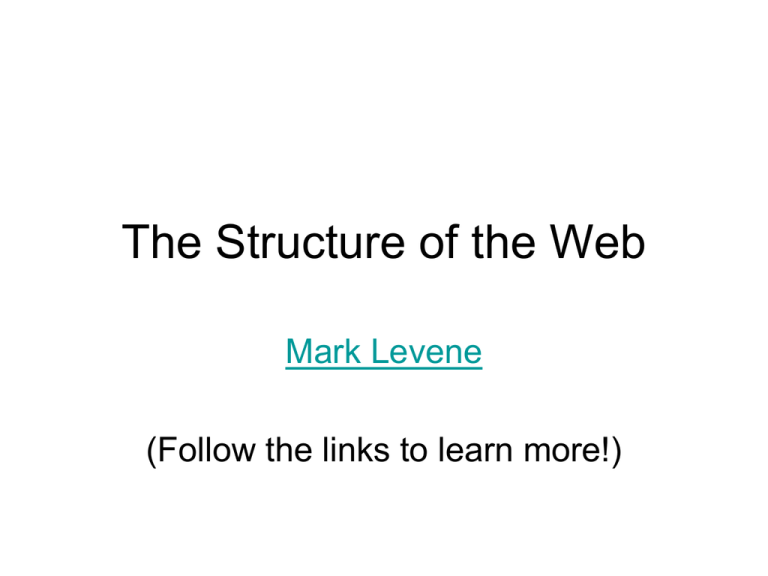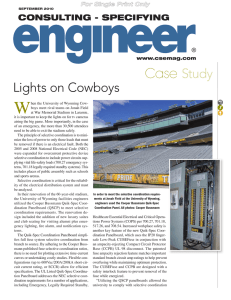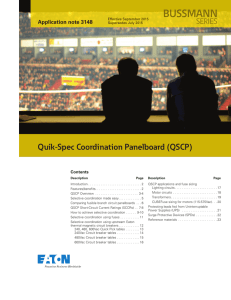The Structure of the Web
advertisement

The Structure of the Web Mark Levene (Follow the links to learn more!) Questions • • • • • • • • How many people use the web? What is the size of the web? How many web sites are there? How many searches per day? How do web pages change? What is the graph structure of the web? How could the structure arise? What can we do with link analysis? Global Internet Statistics • 25% of world population is online as of mid-2009 • 51.4% online in the UK • 92.5% online is Sweden • 58.4% online in Europe • 77.4% online in USA • 10.9% online in Africa • 21.5% online in Asia The Size of the Web • Lawrence and Giles 1999 – 800 million • Over 11.5 billion in 2005 (Google indexed over 8 billion at the time) • About 600 billion in 2010, approaching 1 trillion • Coverage – about 40% in 1999 • Overlap - low • The deep (or hidden or invisible) web contains 400-550 times more information. Capture Recapture • SE1 – reported size of search engine 1. • Q – set of queries. • QSE1 and QSE2 pages returned for Q from two engines. • OVR – overlap of QSE1 and QSE2. • Estimate of Web size: (QSE2 x SE1) / OVR Search Engine Statistics • Google has over 40,000 searches a second. • In 2005 Google has 36.5% searches but as of 2010 Google dominates with Bing and Yahoo far behind. • In China and Korea local engines are more popular. • Users are spending more time on the web (over 34 hours a month, Feb. 2009). Growth in number of Public Sites • Number of web sites identified by capturerecapture method by sampling random IPs. • Average size of web site 441 pages. • Decrease in 2002 – no rush to get online, economic factors. How do Web Pages Change • • • • Most pages do not change much. Larger pages change more often. Commercial pages change more often. Past change to a web page is a good indicator of future change. • About 30% of pages are very similar to other pages, and being a near-duplicate is fairly stable. Bowtie Model of the Web • Broder et al. 1999 – crawl of over 200 million pages and 1.5 billion links. • SCC – 27.5% • IN and OUT – 21.5% • Tendrils and tubes – 21.5% • Disconnected – 8% Diameter of the Web • Compute Average shortest path between pairs of pages that have a path from one to the other. • Broder 99 – directed 16.2, undirected 6.8 • Barabasi 99 – directed for nd.edu 19 • Small diameter is a charactersitic of a small world network • Choose random source and destination – 75% of the time no directed path between them. Web Structure Distributions • Average out-degree between 7 and 8 • Degree distributions – how many page have n=1,2,… links: – indegree : – outdegree : • Log-log plots 1 n 2.1 1 2.72 n What is a Power Law C f i i • • • • • f(i) is the proportion of objects having property i E.g. f(i) = # pages, i = # inlinks E.g. f(i) = # sites, i = # pages E.g. f(i) = # sites i = # users E.g. f(i) = frequency of word , i = rank of word, from most freqeunt to least frequent • Log-log plot - linear relationship (straight line) Zipf’s Distribution for Brown Corpus (1 million words – f(r) approx. C/r) Word Frequency for Brown Corpus Word Instances % Frequency 1. The 69970 6.8872 2. of 36410 3.5839 3. and 28854 2.8401 4. to 26154 2.5744 5. a 23363 2.2996 6. in 21345 2.1010 7. that 10594 1.0428 8. is 10102 0.9943 9. was 9815 0.9661 10. He 9542 0.9392 Evolving Random Networks • Classical random graphs – all links have the same probability p – degree distribution is poisson • Evolving networks – loglog degree distribution is linear • Model – add new node and randomly link to it with probability p, or with probability 1-p choose an existing node with proportion to its inllinks. How Power Laws Arise Preferential Attachment or The Rich Get Richer Power Laws on the Web • • • • • • • inlinks (2.1) outlinks (2.72) Strongly connected components (2.54) No. of web pages in a site (2.2) No. of visitors to a site during a day (2.07) No. links clicked by web surfers (1.5) PageRank (2.1) Robustness and Vulnerability of Power Law Networks • The web is extremely robust against attacks targeted at random web sites. • The web is vunerable against an attack targeted at well-connected nodes. • Has implications, e.g. on the spread of viruses on the Internet.







